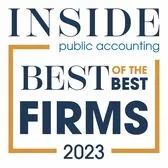Anyone in the real estate business should be aware of the new, powerful, and flexible Opportunity Zone (OZ) program, which became effective January 1, 2018, as part of the Trump Administration’s Tax Cuts and Jobs Act (2017 Tax Act).
The OZ program allows up to a seven-year federal (and in most states) tax deferral on short-term or long-term capital gains, resulting in a 15 percent permanent tax reduction on the reinvested gains after holding the OZ investment for at least seven years, and a complete federal tax exemption of any post-reinvestment appreciation in the OZ investment(s) after ten years. It is important to note that California, Massachusetts, Mississippi, and North Carolina have not adopted the federal provisions. OZ- related tax benefits are not available in these states; therefore, real estate transactions may be best suited for Section 1031/ Like-Kind Exchanges rather than OZ investments.
The OZ program is available for both real estate projects as well as certain operating businesses located primarily within an OZ census tract. Operating businesses wrapped in an OZ fund can potentially yield much greater after-tax results than real estate projects. Other benefits of operating businesses include speed to revenue generation, job creation, and overall economic sustainability – attractive benefits for government agencies and OZ communities.
A common fact pattern that we have encountered over the first two years of the program involves landowners who acquired OZ property before 2018 – which potentially disqualifies the property from OZ benefits. At first glance, the owner thinks they won the lottery but then finds out there are many hoops to jump through to secure full OZ program benefits. However, there are ways to remedy this issue.
There are generally four ways for the current owner(s) to utilize the land in an OZ project – each with significantly differing tax consequences.
1. Sell the Land to a Qualified Opportunity Fund (QOF) or a Qualified Opportunity Zone Business (QOZB)
This is the most straightforward option and will work well provided the current landowner(s) do not end up owning more than 20 percent of the OZ project. If the owner(s) end up with more than a 20 percent equity interest in the project, then the harsh “Related Party Rules” kick in. The following two unfavorable things can then happen –
- The land will be characterized as a “non-qualified” asset held by the QOF or QOZB and if the value of these bad assets end up being more than 10 percent of the QOF’s overall value (if held directly) or 30 percent of the QOZB’s asset value (if held at the sub-entity level), the entities may lose their OZ classification and subject the QOF to penalties and eventually lose all program benefits, and
- The landowner(s) cannot reinvest their tax gain on the land sale into the QOF that will control the land. They can, however, roll that gain into another unrelated QOF and defer the gain recognition.
Note that a ground-up build on larger commercial projects will typically result in the land falling below 30 percent of the value of the qualifying property when held by the QOZB entity, which could neutralize the Related Party impact in i) above but ii) still presents issues for the seller. In determining whether the Related Party Rule test is violated, capital interests, income interests, and carried interests are all factored into the 20% test. Residential land values are typically higher relative to the total project value that can present problems in staying under 10% and 30% tests in the case of smaller residential projects.
2. Contribute the Land to the QOF
The main benefit of this strategy is that the Related Party Rule does not apply to this structure; therefore, the contributing party can hold more than 20 percent of the QOF. In addition, there is no gain triggered on the transfer unless there are mortgages/ liabilities on the property that exceed the contributor’s tax basis in the property.
On the negative side, to obtain the various OZ benefits, including tax-free treatment after ten years, the contributing party must have a capital gain within 180 days before making the land contribution to obtain OZ benefits. In addition, the contributing party only receives a “qualified” investment in the QOF to the extent of their “tax basis” in the property contributed. For example, assume a taxpayer purchased their lot for $1,000,000 five years ago. The property is now worth $1,500,000. Only the $1,000,000 of tax basis is eligible for OZ benefits. The extra $500,000 is a non-qualified QOF investment (which also creates a “Mixed Fund”) and is not eligible for sheltering other capital gains, five and seven-year asset step-ups, or the ten-year exemption. If the owner recognized a capital gain of at least $1,000,000 from another asset during the prior 180 day recognition period, the land contribution is treated the same as cash, up to the tax basis in the land. That portion is eligible for all OZ benefits.
The best assets to contribute to a QOF under this approach will be those with a tax basis close to market value.
3. The Land Owner can Enter into a Ground Lease with the QOF or QOZB
Those landowners not wanting to trigger tax gain and/ or not willing to give up total control of the land can enter into a ground lease with a QOF or QOZB.
The land will not be eligible for the various five, seven and, 10-year tax step-ups when it is not held by the QOF or QOZB. The landowner might also want to invest other capital gains they have recently generated directly into the QOF to obtain OZ benefits associated with future building appreciation under a long-term lease. However, if they own more than 20 percent of the QOF, then other Related Party Rules apply, which are less onerous than those associated with a sale, discussed in 1 above.
The parties need to make sure there are no lease prepayments beyond a year and that any options granted to the lessee to purchase the land in the future granted are set at fair market value.
In many markets, there are significant differences in the perceived value of OZ properties. In both purchases and leases, there may be more creativity needed to bring the parties together. Therefore, in the case of ground lease structures, the parties might consider structures that allow the lessor/owner to share in the project’s value increase via formula lease increases, purchase option increases or allocation of proceeds to the lessor upon the sale of the project. When representing landowners, we will generally try and build in a right-of-first-refusal to purchase OZ interests of early investors to allow further participation in the OZ benefits.
4. Land Swaps / Section 1031 Like-Kind Exchanges
A final structure for participation in an OZ project is via an IRC Section 1031 transaction. Since the OZ statute generally requires that the property be “purchased” after 2017 to be eligible for OZ classification and related benefits, this strategy will only work for land values that will be less than 30 percent of total project cost/ value contained in the QOZB. Even though the property is treated as non-qualifying, as long as the tax basis (along with other QOZB non-qualifying assets) in the new property stays under 30 percent, the QOZB, the QOF should maintain OZ compliance and ultimately be eligible for the full OZ benefits. This is a preferred strategy when dealing with a non-conforming state as it avoids triggering state tax.
Alternatively, a legacy landowner might also be able to “refresh” their OZ real estate holdings by swapping their pre-2018 land for a new OZ parcel that fits their project parameters. For maximum flexibility, the transaction would generally be structured as a taxable sale rather than a Section 1031. For example, the OZ landowner could trade existing OZ property for another property in an OZ. Likewise, a QOF or QOZB could obtain OZ property from a third-party utilizing a Section 1031 structure provided the property, and any other non-qualifying property held by the QOZB remains less than 30 percent of the QOZB’s total value throughout a ten-year or more holding period.
QOF’s and QOZB’s can also enter into future Section 1031 transactions on properties they hold and further defer the tax on disposition; however, the semi-annual testing requirements – 70 percent for QOZB’s and 90 percent for QOF’s must be considered throughout the holding period.
Finally, the OZ program is arguably the largest safety net ever devised for “blown” Section 1031 exchanges – not necessarily by design. It is common for taxpayers to start down the path of a Section 1031 only to discover that the 45-day identification and 180-day closing deadlines are impractically short or that some or all of the proceeds from the sale “leg” cannot be reinvested in time. Interestingly the Like-Kind 180-day period begins on the date of sale while the OZ 180-day period will generally not begin until year-end since the gain will often come through on a K-1 and/ or will represent IRC Section 1231 gain – both of which are generally deemed to occur on December 31st. So right from the start, an OZ transaction will generally provide more time to execute.
The “gating” of OZ Program reinvestments get even better as you start adding up all of the regulatory relief for reinvestment timing vs. a 1031 structure. The OZ Program can effectively provide a real estate investor with a replacement window of up to 43 months or more – a very attractive alternative to the highly restrictive 180-day replacement period for a traditional Section 1031 exchange. This can effectively give a taxpayer the ability to execute a ground-up construction project as the replacement property – an impossibility for a traditional Section 1031 transaction.
Unlike the unlimited deferral potential for a 1031 transaction, taxpayers considering an OZ investment must fully understand that the deferred gain (adjusted downward by up to 15% if held for seven years by then) will be recognized in 2026 regardless of whether the replacement property is still held. Furthermore, a Section 1031 structure for a real estate disposition will benefit residents of the states mentioned above that have not yet conformed to the OZ Program.
A final valuable OZ feature that many people do not realize is that you can use a mix of Section 1031 AND OZ investing to accomplish your tax objectives. I have a client with $50 million in real estate gains from a commercial building that had been held (in an S Corp!) for three generations. They are buying several Section 1031 replacement properties, but they are still about $15 million short with a month to go. So, they are prepared to roll the other $15 million into an OZ fund and allow them to defer another $3.5 million in federal tax. The OZ program also lets them own a portion of the replacement property outside the corporate structure – a huge benefit for income and estate planning.
About Blake Christian
Blake Christian is a tax partner in the Park City, Utah and Long Beach, California offices of HCVT – a Top 30 CPA firm in the U.S. Blake has four decades of tax consulting experience and specializes in tax planning for businesses and high net worth individuals. He speaks and writes extensively on the federal and state Opportunity Zone Programs. Additional OZ Program information can be accessed at services-Federal-Qualified-Opportunity-Zone.html
Blake.Christian@hcvt.com | 562.590.9535 | 435.200.9262


